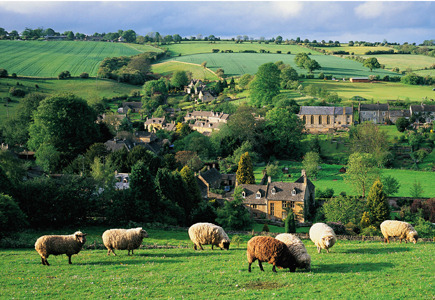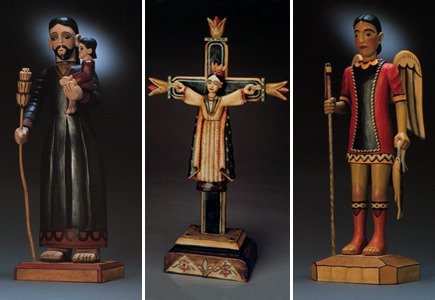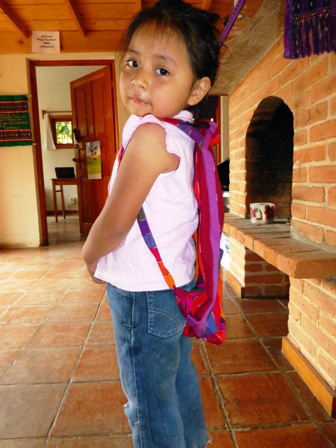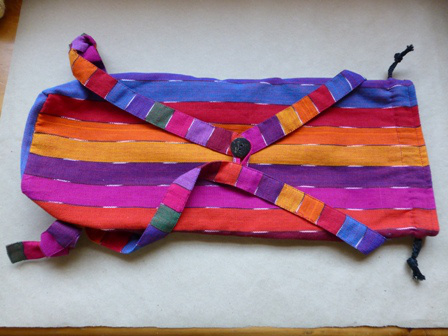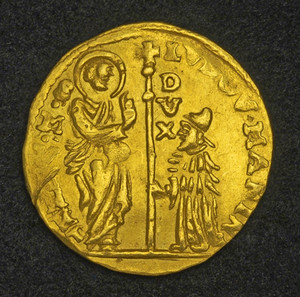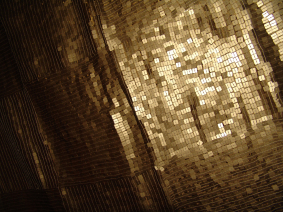Laura Morelli's Blog, page 13
February 1, 2014
English Wool
My piece on English wool for National Geographic Traveler…
Sheep Street, aptly named, meanders past flower-speckled Cotswolds fields and centuries-old buildings made of local stone. It ends in the village of Chipping Campden, so picture-perfect it hardly seems real. In the village center, the 14th-century stone Town Hall and 17th-century Market Hall stand as a testament to an era when sheep’s wool upheld England’s economy. Read more of Laura Morelli’s “The Genuine Article” at National Geographic Traveler…








December 3, 2013
New Mexican Santos
My piece on New Mexican santos for National Geographic Traveler…
From the dusty shelves of an Albuquerque antiques stall, a faded statue of Saint Michael stares at me. With a blank gaze on his face—as if he’s done it a million times before—he wields his sword to slay the dragon, a curious creature cowering at his feet that resembles lizards I’ve seen roaming the desert just south of here. Read more of Laura Morelli’s “The Genuine Article” at National Geographic Traveler…








November 4, 2013
Guatemalan textiles: A fun success story
Recently I received an email from Jensen Wheeler Wolfe, who is the creator of The Little Yoga Mat, eco-friendly yoga mats for little kids. She asked for my help in finding a good source for traditional Guatemalan weavers who might make mini-backpacks for the yoga mats. Her vision: to locate Maya weavers who could make beautiful handmade backpacks that are traditional, eco-friendly, and sized so that even toddlers can carry the mats to yoga class or pre-school.
I put Jensen in touch with the Maya Traditions Foundation in Guatemala… And voila!
Check out the adorable result! My hat is off to Jensen for bringing these cute backpacks to the market and for supporting traditional craftsmanship. See more at The Little Yoga Mat.








October 25, 2013
A poem about a Venetian gondola
Many thanks to my fellow Venetophile and Facebook friend Kevin J. Ryan, who shared this wonderful poem he wrote:
Lapping wavelets sound their knell
The inhaled breath of San Michele
Wending through her cypress trees
Recast into enticing breeze
Here the latest vessel lured
To a mooring post secured
Bobbing black and splintered gold
Flapping tarps uncover cold
Pilotless against the quay
Ambiguous mystery
Engaged to introduce your stay
Or now to guide your bones away








September 17, 2013
The Gondola Maker: Download an excerpt of my new book set in 16th-century Venice

I’m in the final stages of editing my forthcoming novel, The Gondola Maker, and am excited to share an excerpt with you!
I welcome your feedback and look forward to your comments below or via email at laura (at) lauramorelli.com.
Click here to download a sample chapter of The Gondola Maker as a pdf file.
Thank you for reading!


June 19, 2013
New Book: The Gondola Maker (A Novel)
You may have noticed that I’ve been a little obsessed with Venetian gondolas and gondoliers recently. That’s because I’ve been working on a new book–my first work of fiction–called The Gondola Maker. I’m very excited and can’t wait to share more news with you in the coming weeks!
If you’d like to be notified when The Gondola Maker is published, just provide your e-mail below. I promise not to share your e-mail with anyone!
[contact-form]


June 15, 2013
Brittany’s History of High Headgear
Brittany is a relatively isolated region in France’s extreme northwest, and boasts what may be the country’s richest tradition of textile arts–especially lace. Since the Middle Ages, Breton women have woven, embroidered, knitted and laced everything from costumes to tapestries, sailcloth to fishing nets.
Nowhere is the Breton tradition of lacemaking more striking than in the Pays Bigouden, a small sub-region southwest of Quimper, which boasts a tradition of high headgear. No one knows exactly how or when the tradition of these tall coiffes got started, but one thing’s for sure: it’s kept bigoudine women busy toiling away for months during the winter months in a lacemaking frenzy. Some of the more elaborate examples of this traditional headgear are further embellished with embroidery, representing hours of additional labor. The coiffe usually tops off an equally elaborate dress, skirt, and apron, also featuring embroidery and sometimes lace accents.
Up until the French Revolution, tapestry and lacemaking stood among the primary industries of northwestern France. Bayeux and Alençon in Normandy were renowned for their own distinctive lace patterns and smaller towns had their own prolific communities of lacemakers. The lace styles were as individual as the towns themselves: Bayeux was known for black bobbin lace, Alençon for its white needle lace that was so esteemed it was called point de France.
In spite of Breton lace’s far-reaching influence, the tradition of high headgear remains a particularly bigouden tradition, and artisans continue to make these elaborate headdresses today. Typically women don them only during important festivals and folkloric events, but a handful of mostly elderly women continue to wear these fantastic feats of festoonery every day.
For more about the artisanal traditions of northwestern France, read Laura Morelli’s Made in France.


May 15, 2013
The Venetian Origins of Sequins
The Venetian Republic began minting a particular type of gold coin called a ducat in the thirteenth century. Venetian ducats were highly valued and actively exchanged in a widespread area across the Mediterranean.
The ducat soon came to be referred to as a zecchino after the name of the Venetian mint, the zecca. Venetian zecchini changed with each ruling doge, and can be dated by analyzing the iconography on each coin.
Eventually it became fashionable for women across the Mediterranean world to stitch Venetian zecchini and other coins to their clothing and headdresses. Variations for the word zecchino–along with a similar Arabic word, sikka–ultimately evolved into sequin to describe any shiny circular adornment used on clothing.


April 17, 2013
The Ponte Vecchio of Florence
The Ponte Vecchio–the “Old Bridge”–of Florence is the oldest bridge in the city. Constructed between 1339 and 1346, the bridge spans the Arno River, connecting the Piazza della Repubblica with the Oltrarno district.
Both a commercial space as well as a major thoroughfare, the Ponte Vecchio has been a place to browse, barter, and people-watch for more than 600 years. The bridge has hosted shops since its construction in the fourteenth century. Florentines have constructed, reconstructed, renovated, and added onto the commercial buildings on the bridge over that time, and today these structures present a fascinating conglomeration of colors, styles, and functions.
Today the Ponte Vecchio is known for its jewelers who cater to a lucrative tourist trade. For that reason I don’t recommend buying here. Most of the sparkling items in the windows are not handmade, and unfortunately many were not even made in Florence. Still, strolling the bridge and window-shopping are an integral part of the Florentine experience, so don’t miss it! When you’re ready to buy, follow the bridge to the Oltrano district, home to a flourishing neighborhood of artisans who make everything by hand.


March 29, 2013
5 Things to Know about pysanky, traditional Easter eggs of Eastern Europe
1. Pysanky are traditional handpainted eggs made during the Easter season throughout Eastern Europe, especially the Ukraine, Slovenia, Lithuania, Belarus, Poland and Bulgaria. Their origins are lost to history, but ornamented eggs have been excavated from archaeological sites dating as far back as the prehistoric era.
2. Pysanky-makers use the wax-resist method, similar to batik, using a pin-like stylus to draw intricate designs in hot wax. The wax prevents color from adhering to the egg. Artisans apply wax and dye in alternating layers, building the design color by color from light to dark. The process may take many hours.
3. Traditionally people decorated raw eggs, but today many artisans prefer longer-lasting eggs made of wood, ceramic, or other materials.
4. Pysanky decoration varies from region to region, from village to village, from family to family. Many pysanky designs and traditions are handed down over generations, some carefully guarded secrets.
5. Recurring traditional motifs include geometric and plant forms, flowers and birds, and Christian symbols.
For more on pysanky, click here for my interview with Carolyn Flynn of the Albuquerque Journal.



